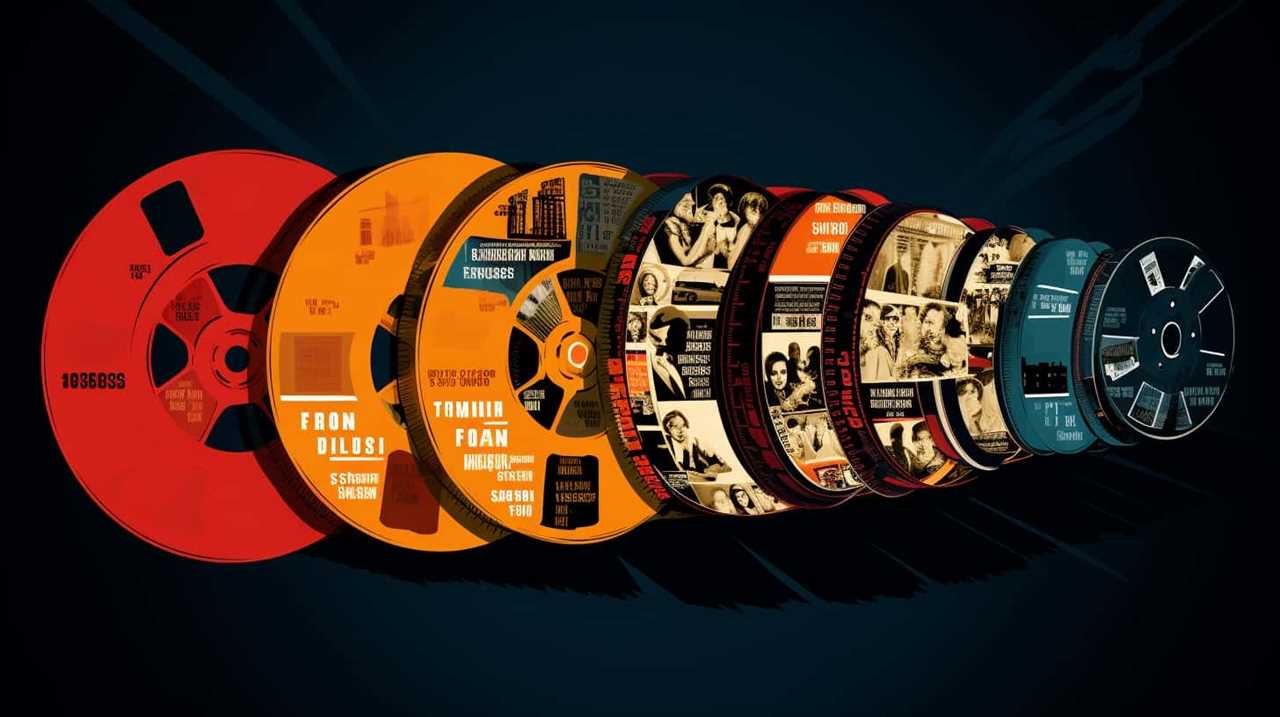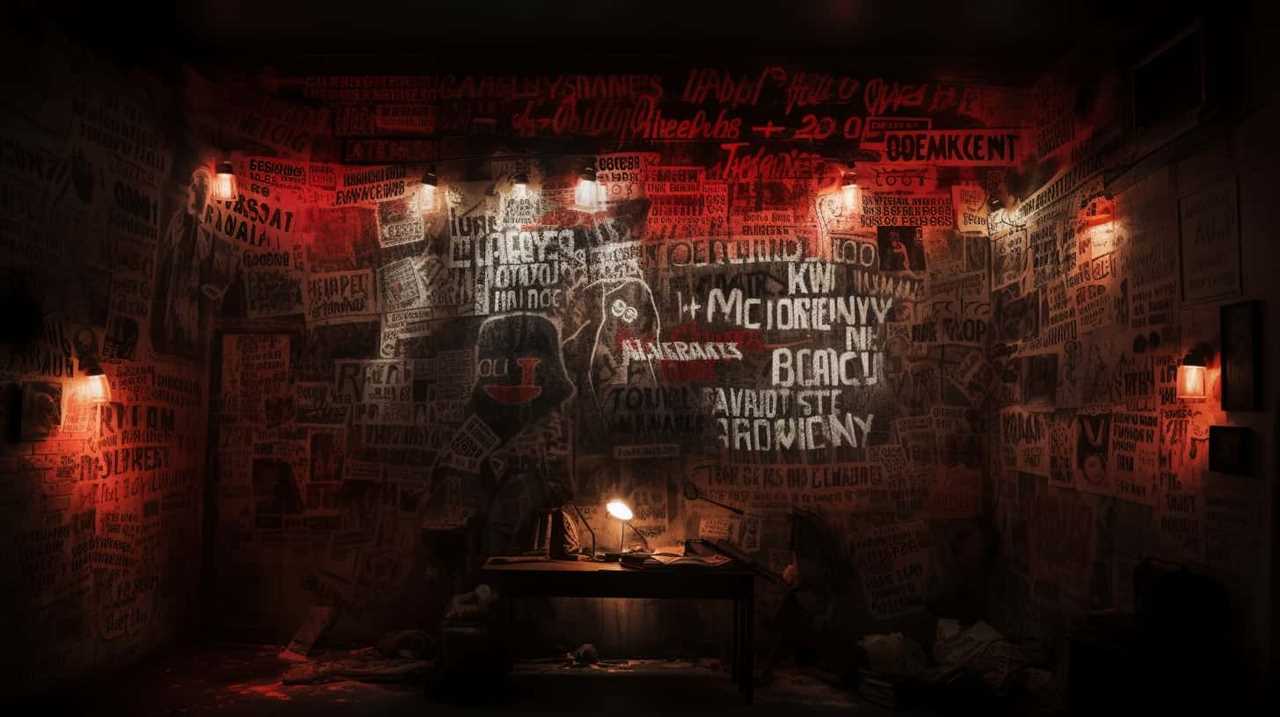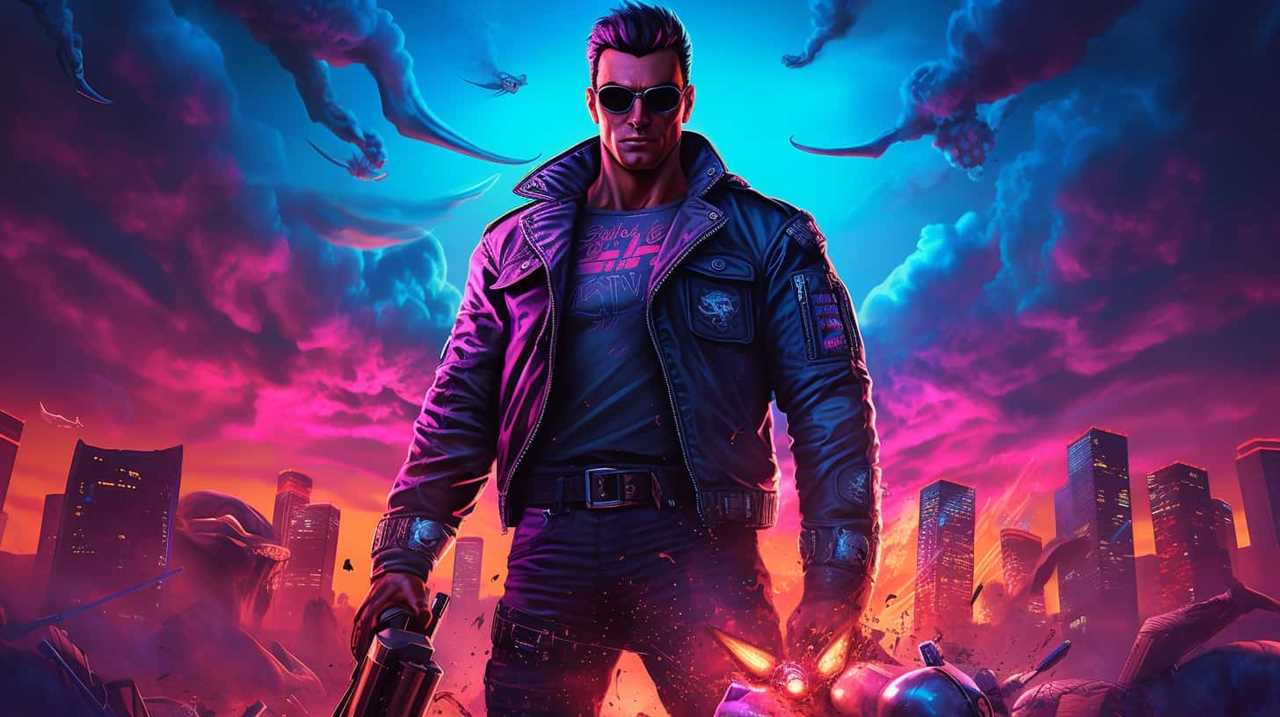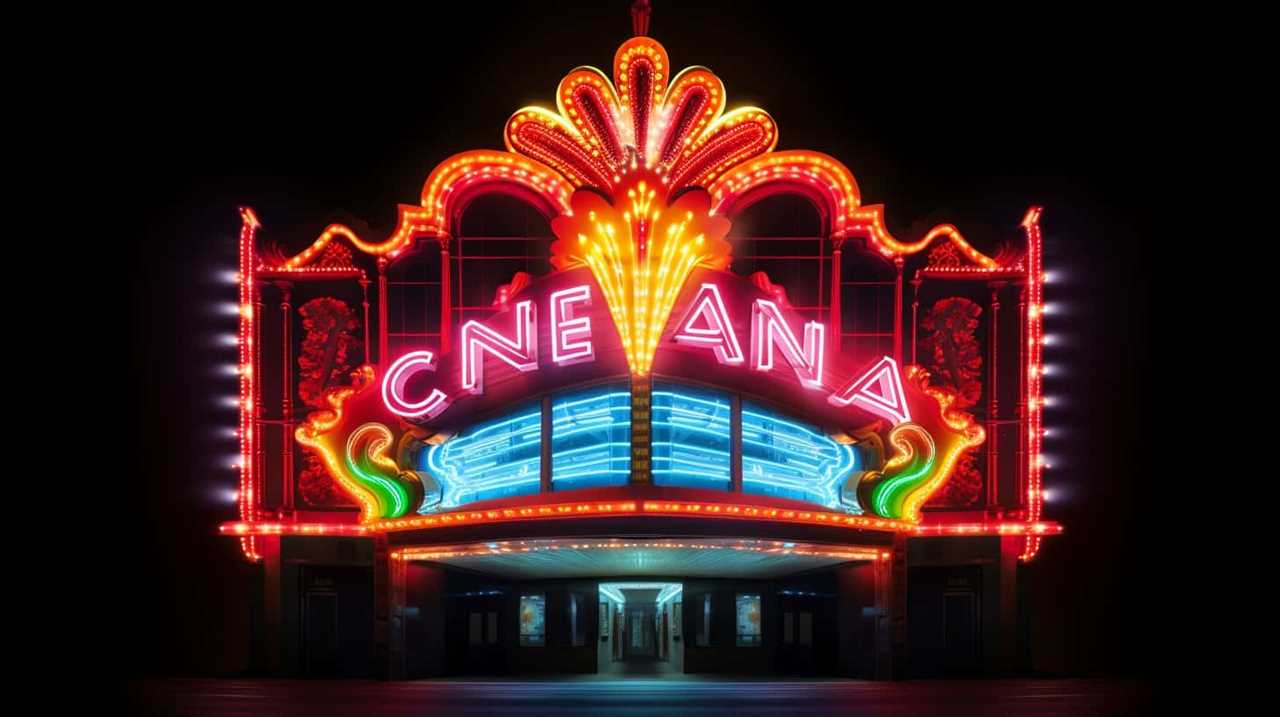Being someone who understands the importance and powerful impact that words can have, I have put together a selection of iconic quotes from cult films.
From the spine-chilling ‘I’ll be back’ in The Terminator to the iconic ‘Here’s Johnny!’ in The Shining, these lines have become part of our cultural lexicon.
With phrases like ‘May the Force be with you’ from Star Wars and ‘Say hello to my little friend’ from Scarface, these quotes have transcended their films and become ingrained in our collective consciousness.
From the heartfelt ‘I’m king of the world!’ in Titanic to the timeless ‘There’s no place like home’ in The Wizard of Oz, these quotes continue to resonate with audiences.
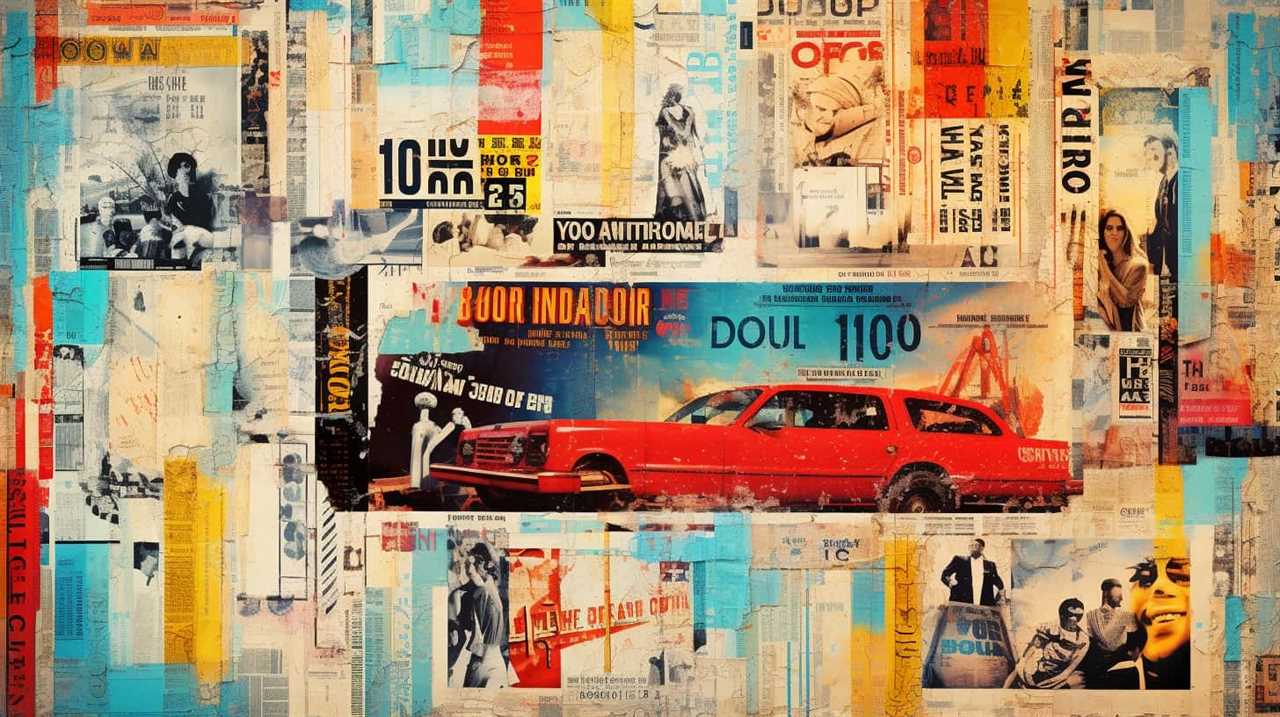
So, let’s dive into this compiled list and relive the magic of these unforgettable lines.
Key Takeaways
- Cult movie quotes have the power to transcend their original context and become ingrained in popular culture.
- Famous movie quotes become part of our everyday language and create a sense of community among fans.
- Specific cult movie quotes like "I’ll Be Back" from The Terminator and "Here’s Johnny!" from The Shining have become iconic and have been referenced and parodied in various forms of media.
- Movie quotes like "May the Force Be With You" from Star Wars and "I’m King of the World!" from Titanic have had a significant cultural impact, inspiring fan theories and discussions, and becoming part of everyday vernacular.
I’ll Be Back" – The Terminator (1984)
When I first heard the iconic line, ‘I’ll be back,’ from The Terminator (1984), I knew it would become an unforgettable cult movie quote. These iconic catchphrases in cult movies have the power to transcend their original context and become ingrained in popular culture. They evoke a sense of nostalgia and instantly transport us back to the moments that made these movies so memorable.
The impact of famous movie quotes goes beyond their initial popularity. They become part of our everyday language, effortlessly slipping into conversations and leaving a lasting impression on our minds. They become a shorthand for shared experiences and create a sense of community among fans.
The line ‘I’ll be back’ perfectly encapsulates the stoic determination and unwavering resilience of Arnold Schwarzenegger’s character, the Terminator. It has become synonymous with the franchise itself, representing the indomitable spirit of the series. This quote has been parodied, referenced, and imitated countless times, solidifying its status as one of the most recognizable lines in cinematic history.
The impact of ‘I’ll be back’ extends beyond its cultural significance. It has inspired other filmmakers and actors to create their own memorable catchphrases, contributing to the rich tapestry of iconic movie quotes. The enduring popularity of these lines is a testament to the power of storytelling and the ability of movies to leave a lasting impact on our lives.
Here’s Johnny!" – The Shining (1980)
How does the iconic line ‘Here’s Johnny!’ from The Shining (1980) contribute to the list of unforgettable cult movie quotes?
This line, delivered by Jack Nicholson’s character Jack Torrance, has achieved immense cultural significance and has had a lasting influence on pop culture. It has become a symbol of fear and suspense, instantly recognizable to audiences around the world.
The cultural significance of this line lies in its ability to capture the intensity and madness of Jack Torrance’s character. As he breaks through the door with an axe, Jack exclaims, ‘Here’s Johnny!’, referencing Johnny Carson’s iconic introduction on The Tonight Show. This unexpected and chilling twist on a familiar phrase adds an eerie and unsettling element to the scene, leaving a lasting impression on viewers.

Furthermore, ‘Here’s Johnny!’ has permeated popular culture, being referenced and parodied in various mediums. From television shows to comedy sketches, this line has become a comedic shorthand for a dramatic entrance. Its impact on pop culture is a testament to its enduring legacy as one of the most memorable lines in cinematic history.
May the Force Be With You" – Star Wars (1977)
The phrase ‘May the Force Be With You’ has become an iconic catchphrase in the world of sci-fi, thanks to its origin in the groundbreaking film Star Wars (1977).
Beyond its status as a memorable line, it has also had a profound cultural impact, permeating popular culture and becoming synonymous with the franchise itself.
Despite being uttered over four decades ago, this quote continues to resonate with audiences, highlighting the enduring popularity and relevance of the Star Wars saga.
Iconic Sci-Fi Catchphrase
One iconic sci-fi catchphrase that has become synonymous with the Star Wars franchise is ‘May the Force Be With You.’ This simple phrase holds immense cultural significance and has had a profound influence on pop culture.
Here are two reasons why this catchphrase has become so iconic:
- Unifying Theme: ‘May the Force Be With You’ encapsulates the core theme of the Star Wars universe – the power of the Force. It represents a wish for strength, guidance, and protection, connecting characters and audiences alike in their shared belief in the Force.
- Universal Appeal: The catchphrase has transcended the boundaries of the Star Wars fandom and has been adopted by people worldwide as a form of encouragement and well-wishing. It has become a part of everyday vernacular, highlighting its widespread influence on popular culture.
The enduring popularity and widespread usage of ‘May the Force Be With You’ exemplify its lasting impact and solidify its place as an iconic sci-fi catchphrase.
Cultural Impact of Star Wars
As a lifelong fan of the Star Wars franchise, the cultural impact of the iconic catchphrase ‘May the Force Be With You’ cannot be overstated. This simple yet profound phrase has transcended the boundaries of the movie and has become deeply ingrained in popular culture. Its cultural significance can be seen in various aspects, from everyday conversations to political speeches. It has inspired countless fan theories and discussions about the nature of the Force and its role in the Star Wars universe.

| Star Wars Fan Theories | Cultural Impact of ‘May the Force Be With You’ | Pop Culture References |
|---|---|---|
| Darth Jar Jar theory | Used as a farewell or good luck phrase | Parodied in other films |
| Rey’s parentage | Symbolizes hope and guidance | Referenced in TV shows |
| Snoke’s true identity | Motivates and inspires characters | Memes and merchandise |
The enduring popularity of Star Wars and the continued use of this catchphrase highlight its lasting impact on our society. May the Force be with you!
Enduring Popularity and Relevance
I can’t overstate the enduring popularity and relevance of ‘May the Force Be With You’ – a catchphrase from the 1977 film Star Wars. This iconic line has transcended generations, becoming deeply embedded in popular culture. Its enduring appeal lies in its universal message of hope, guidance, and the power within each individual.
The cultural significance of ‘May the Force Be With You’ is evident in its widespread recognition and adoption in various contexts, from casual conversations to commencement speeches. It has become a symbol of strength and encouragement, resonating with people from all walks of life. The phrase’s ability to inspire and unite is a testament to its lasting impact.
As we delve into another cult movie quote, let’s transition from the galactic realm of Star Wars to the gritty world of Scarface and explore the infamous line, ‘Say hello to my little friend.’

Say Hello to My Little Friend" – Scarface (1983)
As I think about the iconic movie catchphrase, ‘Say hello to my little friend,’ from the movie Scarface, it’s clear that certain lines have the power to become etched in our collective consciousness.
These memorable lines have the ability to transcend the film they originate from and become cultural references and parodies in their own right.
The impact of these catchphrases goes beyond the movie itself, shaping our language and providing a shorthand for expressing certain emotions or situations.
Iconic Movie Catchphrases
The iconic movie catchphrase ‘Say hello to my little friend’ from Scarface (1983) has become a memorable and widely recognized line in cult cinema. Its cultural impact is undeniable, as the line has been referenced and parodied in various forms of media since its inception.
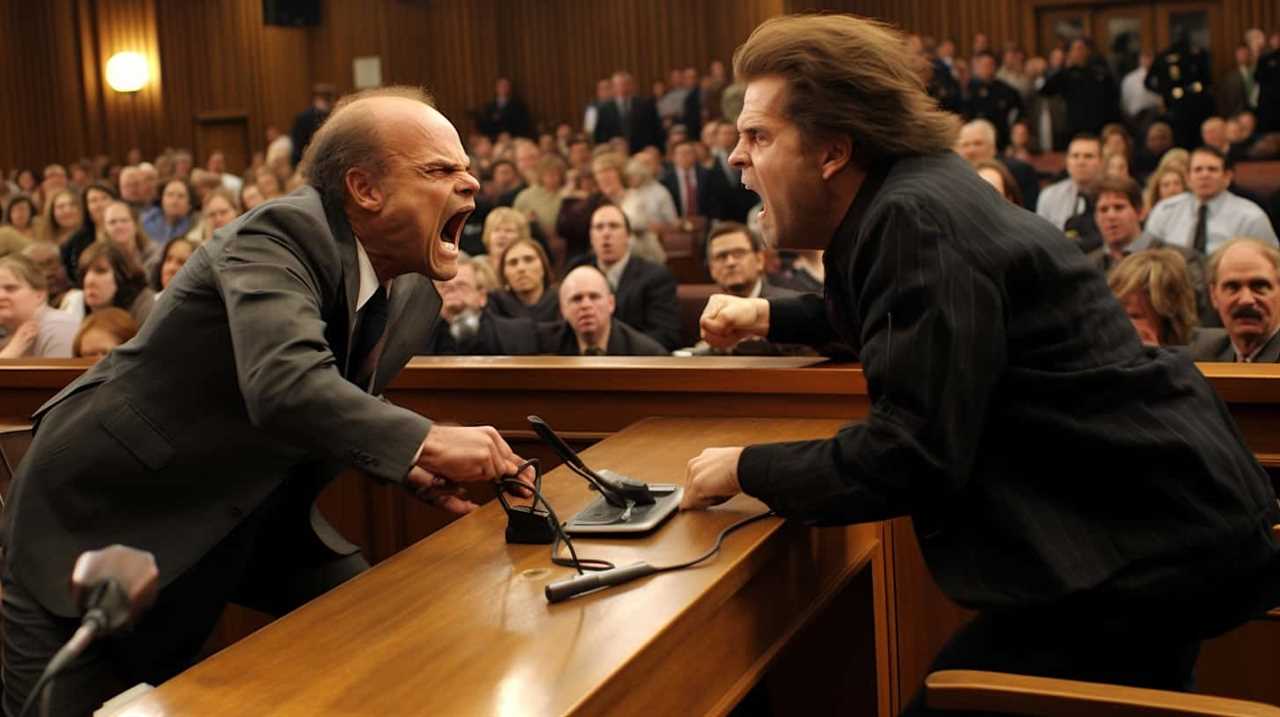
This memorable line encapsulates the essence of Tony Montana, the film’s protagonist, and his ruthless and larger-than-life persona. It serves as a declaration of power and a warning to those who underestimate him. The line’s delivery by Al Pacino, with his signature intensity, further emphasizes its impact and solidifies its place in cinema history.
‘Say hello to my little friend’ has transcended the film itself and has become a symbol of bravado and defiance. Its enduring popularity speaks to its resonance with audiences and its ability to capture a moment that’s forever etched in our collective memory.
As we explore the impact of memorable lines, it’s important to recognize the lasting influence of ‘Say hello to my little friend’ and its contribution to the lexicon of cult cinema.
Impact of Memorable Lines
Continuing from the discussion on iconic movie catchphrases, ‘Say hello to my little friend’ from Scarface (1983) has made an indelible impact on cult cinema, resonating with audiences and solidifying its place in our collective memory.

This memorable line, delivered by Al Pacino’s character Tony Montana, has become synonymous with the film and has seeped into popular culture. Its significance in film history can’t be understated. The line perfectly captures Tony Montana’s bravado and ruthless nature, and it has been referenced and parodied countless times in movies, TV shows, and even in everyday conversations.
‘Say hello to my little friend’ has transcended its original context to become a cultural phenomenon, showcasing the power of a well-crafted line to leave a lasting impact on popular culture.
Cultural References and Parodies
I’ve noticed numerous cultural references and parodies to the iconic line ‘Say hello to my little friend’ from Scarface (1983), showing its enduring impact on popular culture. This line has become a staple in modern media, with various movies, TV shows, and even advertisements paying homage or parodying the iconic moment.
Here are some notable examples:
- Movies: Films like Despicable Me 2 (2013) and The Other Guys (2010) feature characters mimicking the line in comedic contexts, highlighting its widespread recognition and comedic potential.
- TV Shows: Popular animated series like The Simpsons and Family Guy have referenced the line in their episodes, showcasing its influence across different genres and mediums.
These cultural references and parodies demonstrate the lasting impact of Scarface and its unforgettable quote on contemporary media, solidifying its place in pop culture history. It’s fascinating to see how such a memorable line continues to inspire creativity and humor in modern storytelling.
Now, let’s transition to another iconic movie quote, ‘I’m king of the world!’ from Titanic (1997)…
I’m King of the World!" – Titanic (1997)
As I stood on the bow of the sinking ship, I couldn’t help but exclaim, "I feel like I’m king of the world!" in Titanic (1997). This iconic line, spoken by Leonardo DiCaprio’s character Jack Dawson, has become one of the most memorable movie quotes in history. Its cultural impact has been undeniable, as it has been parodied, referenced, and imitated countless times since the film’s release.
The table below illustrates the significance of this quote in popular culture:

| Category | Examples | Explanation |
|---|---|---|
| Parodies | Numerous films, TV shows, and commercials have referenced or spoofed this line, showcasing its enduring popularity. | The line has become a go-to reference for characters in various forms of media, highlighting its widespread recognition. |
| Imitations | People from all walks of life have reenacted this famous scene, often on the edge of a high point, to capture the same sense of triumph and exhilaration. | The line has transcended the film itself, inspiring individuals to recreate the iconic moment and share it with others. |
| Cultural Impact | The quote has become a symbol of personal triumph and the desire to conquer the world, resonating with audiences on a deeper level. | Its enduring appeal lies in its ability to evoke a sense of empowerment and possibility, making it a timeless phrase that continues to inspire. |
The impact of "I’m king of the world!" extends far beyond the confines of Titanic. It has become a cultural touchstone, forever etched in the annals of cinema history.
Why So Serious?" – The Dark Knight (2008)
Amidst the collection of unforgettable cult movie quotes, one line that stands out is ‘Why So Serious?’ from The Dark Knight (2008). This iconic line, delivered with chilling intensity by Heath Ledger’s Joker, has left a lasting cultural impact. It encapsulates the psychological depth of the movie, delving into the twisted mind of one of the most iconic villains in cinematic history.
The line ‘Why So Serious?’ immediately captures the attention of the audience, drawing them into the dark and chaotic world of Gotham City. It sets the tone for the entire film, establishing the Joker as a force to be reckoned with.
The cultural impact of this line can’t be overstated. It has become a catchphrase, often used in pop culture references and parodies. It has even been tattooed on the bodies of devoted fans, forever linking them to the enigmatic character of the Joker.
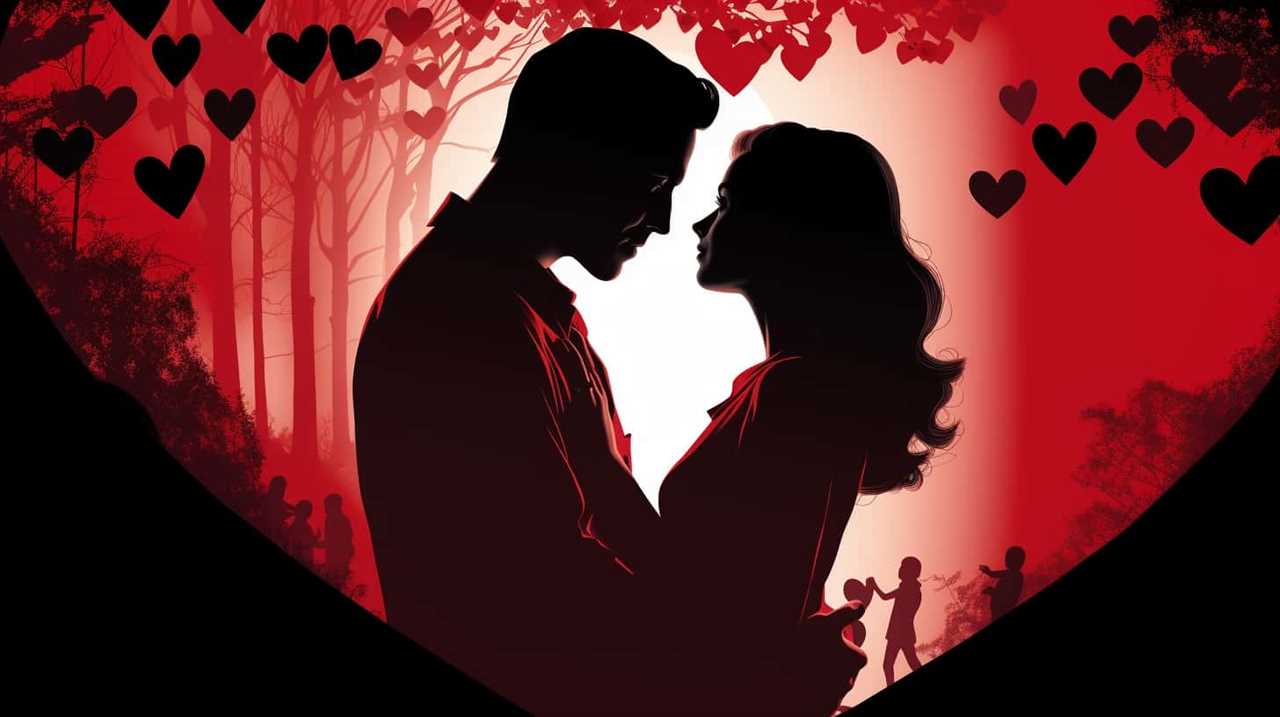
The psychological depth behind this line is what truly makes it memorable. It speaks to the Joker’s twisted sense of humor, his enjoyment of chaos and violence. It forces the audience to question their own sense of morality and sanity, leaving a lasting impression long after the movie has ended.
I See Dead People" – The Sixth Sense (1999)
When it comes to iconic movie quotes, few have had as lasting an impact as ‘I see dead people’ from The Sixth Sense. This line has become deeply ingrained in popular culture, referenced and parodied countless times since the film’s release in 1999.
It has managed to endure and maintain its relevance, not only because of its chilling delivery by Haley Joel Osment, but also because of the profound themes it represents, such as the existence of the supernatural and the blurred lines between life and death.
Impact of Iconic Line
I was amazed by the impact of the iconic line ‘I see dead people’ from the movie The Sixth Sense (1999). This line has gained immense cultural significance and has become one of the most memorable movie lines of all time.

Here’s why:
- Emotional resonance: The line perfectly captures the chilling and eerie atmosphere of the film, creating a lasting impact on the audience.
- Pop culture phenomenon: ‘I see dead people’ quickly became a catchphrase, entering the lexicon of popular culture. It has been parodied, referenced, and imitated countless times, cementing its status as an iconic line.
The cultural significance and lasting impact of ‘I see dead people’ demonstrate the power of a single line to resonate with audiences and become a memorable part of film history.
Cultural References and Parodies
As a fan of cult movies, I couldn’t help but notice the numerous cultural references and parodies that have been inspired by the iconic line ‘I see dead people’ from The Sixth Sense (1999). This line has gained immense cultural significance, ingraining itself in popular culture and becoming a symbol for supernatural encounters. It has been referenced and parodied in various forms of media, showcasing its lasting impact. From television shows like The Simpsons and South Park to comedy sketches and internet memes, ‘I see dead people’ has become a go-to phrase for comedic effect. It has transcended its original context, becoming a shorthand for unexpected revelations or eerie encounters. The table below highlights some notable examples of cultural references and parodies of this iconic line:
| Media | Reference/Parody |
|---|---|
| The Simpsons | "I see dead people…eating lunch!" |
| South Park | "I see dead celebrities!" |
| Family Guy | "I see dead people…and I’m not just talking about the audience!" |
| Saturday Night Live | "I see dead people…and they’re all voting for me!" |
Enduring Pop Culture Relevance
The enduring pop culture relevance of ‘I see dead people’ from The Sixth Sense (1999) is evident through its widespread recognition and continued influence in various forms of media. This iconic line has achieved a level of cultural significance that few quotes can match. Its impact on language is undeniable, as it has become a part of everyday conversation, often used humorously or ironically. The phrase has been parodied and referenced in countless movies, TV shows, and advertisements, further cementing its place in popular culture.

Additionally, ‘I see dead people’ has become a memorable catchphrase that instantly evokes the eerie atmosphere and supernatural themes of The Sixth Sense. Its lasting impact speaks to the film’s ability to captivate audiences and leave a lasting impression.
Transitioning into the subsequent section about ‘I’m gonna make him an offer he can’t refuse’ – The Godfather (1972), we explore another iconic quote that has become ingrained in popular culture.
I’m Gonna Make Him an Offer He Can’t Refuse" – The Godfather (1972)
One can’t help but be captivated by the iconic line ‘I’m gonna make him an offer he can’t refuse’ from the 1972 cult classic, The Godfather. This line, spoken by Marlon Brando’s character, Don Vito Corleone, hasn’t only become synonymous with the film, but has also achieved a level of cultural significance that few movie quotes can claim.
The impact of this line on popular culture is undeniable. It has been referenced and parodied countless times in various forms of media, from movies and TV shows to songs and advertisements. Its enduring popularity speaks to its ability to resonate with audiences across generations. The line has become a shorthand way of expressing power, influence, and the use of persuasive tactics to achieve one’s goals.

What is particularly innovative about this quote is its ability to convey a complex idea in just a few words. It encapsulates the essence of the character and the world he inhabits. It’s a testament to the power of storytelling and the impact that a well-crafted line can have on an audience.
You Can’t Handle the Truth" – A Few Good Men (1992)
Experiencing the intense courtroom drama of ‘A Few Good Men’ (1992), one can’t forget the powerful line, ‘You can’t handle the truth.’ This iconic quote has had a significant cultural impact, becoming a symbol of the film’s exploration of the complexities of truth and the consequences of uncovering it.
The influence of this cult movie quote can be seen in various ways:
- Memorable Delivery: Jack Nicholson’s portrayal of Colonel Nathan R. Jessup, delivering this line with raw intensity, has made it etched in our collective memory.
- Challenging Authority: The line resonates with audiences because it challenges the notion that we’re always ready to confront the truth, encouraging us to question authority and face uncomfortable realities.
The cultural impact of iconic movie lines extends beyond the film itself. ‘You can’t handle the truth’ has become a catchphrase used in everyday conversations, demonstrating the lasting influence of cult movie quotes on popular culture.

Transitioning into the next section, another unforgettable movie quote is ‘Houston, we’ve a problem’ from ‘Apollo 13’ (1995), which will be explored in the following section.
Houston, We Have a Problem" – Apollo 13 (1995)
As a lover of cinema, I’m constantly amazed by the power of iconic movie catchphrases. These memorable lines have the ability to transcend the screen and become ingrained in popular culture, often taking on a life of their own.
When it comes to the line ‘Houston, we’ve a problem’ from Apollo 13, it has become synonymous with unexpected challenges and the need for quick thinking in the face of adversity.
The popularity of this cult movie quote speaks to the impact it had on audiences and its lasting legacy in the world of cinema.

Iconic Movie Catchphrases
I’ve compiled a list of unforgettable cult movie quotes, and one iconic catchphrase that stands out is ‘Houston, we’ve a problem’ from the movie Apollo 13 (1995). This catchphrase has had significant cultural significance and has had a lasting impact on pop culture.
Here are two reasons why it has become so iconic:
- Real-life drama: The line was actually spoken by astronaut Jack Swigert during the ill-fated Apollo 13 mission, when the crew encountered a critical failure. The phrase perfectly encapsulated the urgency and gravity of the situation, making it resonate with audiences.
- Versatility: ‘Houston, we’ve a problem’ quickly became a catch-all phrase to express any kind of unexpected setback or difficulty. It has been used in countless movies, TV shows, and even in everyday conversation, solidifying its place in the pop culture lexicon.
The enduring popularity of this catchphrase showcases its ability to capture the imagination of audiences and demonstrates its lasting impact on our cultural landscape.
Impact of Memorable Lines
The impact of the memorable line ‘Houston, we’ve a problem’ from the movie Apollo 13 (1995) can’t be overstated. This line, spoken by Tom Hanks’s character Jim Lovell, has had a profound impact on audiences and holds significant cultural significance.
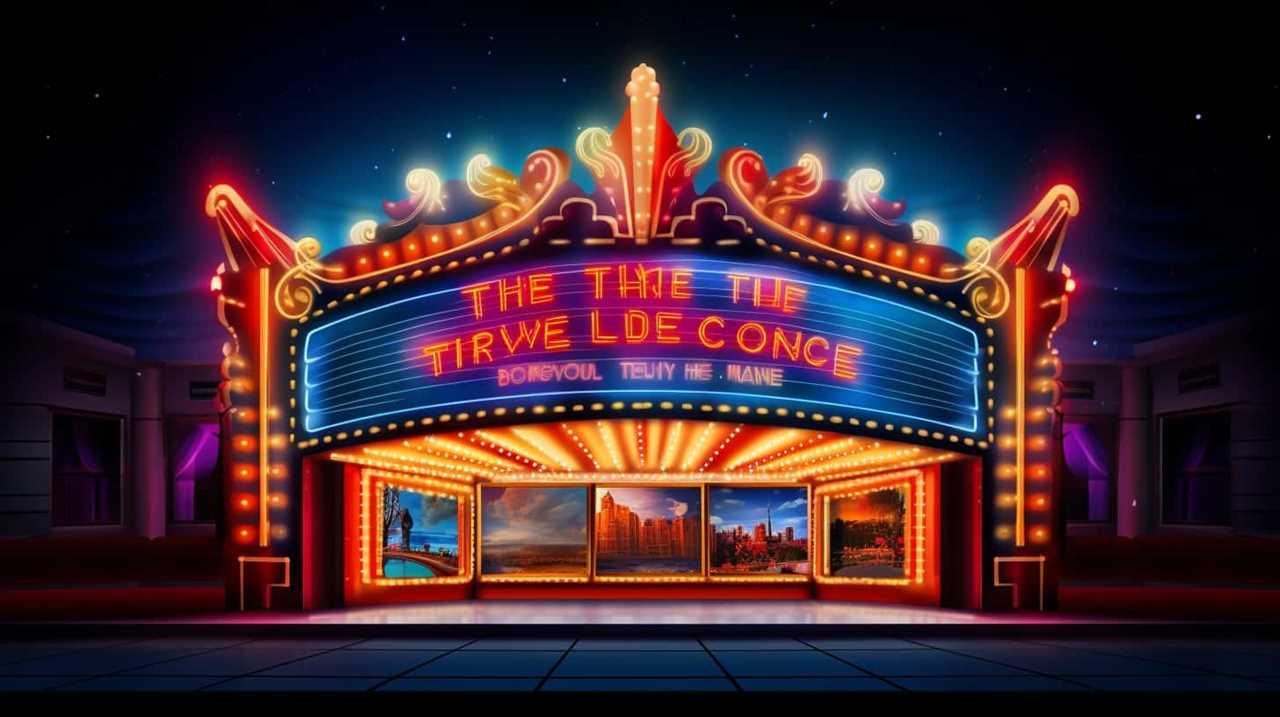
The line captures the intense moment of crisis faced by the Apollo 13 astronauts, as they realized the severity of the situation. It has become a widely recognized phrase, often used humorously or metaphorically, to convey a problem or difficulty.
This line resonates with audiences because it reflects the human capacity to face adversity head-on and find solutions in the face of unimaginable challenges. Its enduring popularity speaks to its ability to capture the spirit of resilience and determination.
Moving on to the next section, let’s explore the cult movie quote popularity and its lasting impact.
Cult Movie Quote Popularity
In my opinion, the popularity of the cult movie quote ‘Houston, we’ve a problem’ from the film Apollo 13 (1995) can be attributed to its universality and lasting impact. This iconic line has transcended the boundaries of the film and has become a part of popular culture. Here are two reasons why this quote has had such a profound impact:
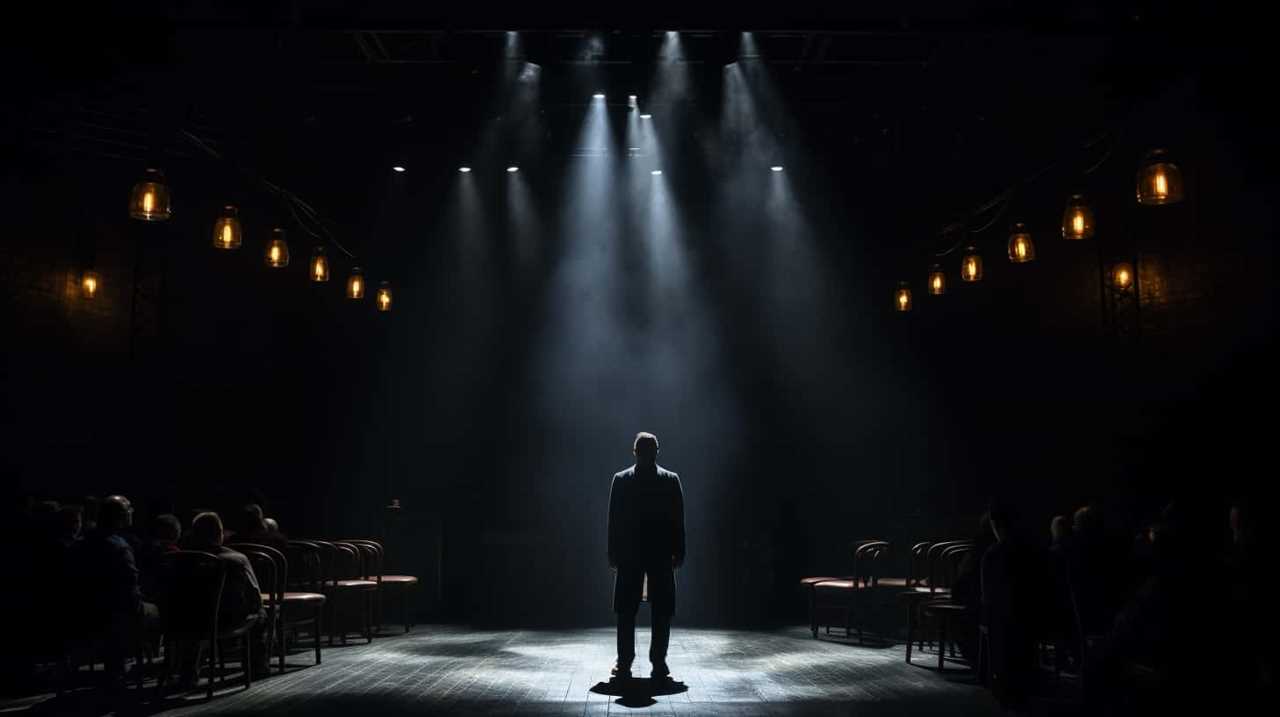
- Universal Recognition: The phrase ‘Houston, we’ve a problem’ is instantly recognizable to people around the world, regardless of whether they’ve seen the movie or not. It has become a shorthand way of expressing a problem or difficulty in any context.
- Emotional Resonance: The quote captures the urgency and tension of the situation faced by the astronauts in the film. It conveys a sense of danger and the need for immediate action, which resonates with audiences and leaves a lasting impression.
The impact of famous lines like ‘Houston, we’ve a problem’ demonstrates the power of memorable quotes in shaping our cultural landscape. Speaking of unforgettable lines, another classic quote that has stood the test of time is ‘Life is like a box of chocolates’ from the film Forrest Gump (1994).
Life Is Like a Box of Chocolates" – Forrest Gump (1994)
As a fan of cult movies, one quote that I find particularly memorable is "Life is like a box of chocolates" from the film Forrest Gump (1994). This iconic line, spoken by the lovable character Forrest Gump, has had a significant cultural impact and has become one of the most recognizable and enduring movie quotes of all time.
The quote itself is a simple metaphor that encapsulates the unpredictability and uncertainty of life. Just as you never know what you’re going to get when you reach into a box of chocolates, life is full of unexpected twists and turns. It speaks to the idea that we must embrace the unknown and make the most of the opportunities that come our way.
To further illustrate the impact of this quote, let’s take a look at a table showcasing some of the most memorable movie quotes in cinematic history:

| Movie Quote | Film | Year |
|---|---|---|
| "I’ll be back" | The Terminator | 1984 |
| "May the Force be with you" | Star Wars | 1977 |
| "Here’s looking at you, kid" | Casablanca | 1942 |
| "Life is like a box of chocolates" | Forrest Gump | 1994 |
| "You can’t handle the truth!" | A Few Good Men | 1992 |
| "I’m king of the world!" | Titanic | 1997 |
These quotes, including "Life is like a box of chocolates," have become ingrained in popular culture and are often referenced and celebrated in various contexts. They have the power to evoke emotions, spark conversation, and even inspire new perspectives.
There’s No Place Like Home" – The Wizard of Oz (1939)
One quote from The Wizard of Oz (1939) that has stuck with me is ‘There’s No Place Like Home.’ This iconic movie quote has had a profound cultural influence since its debut over 80 years ago. It encapsulates the universal longing for a sense of belonging and the comfort of familiar surroundings.
The lasting power of this quote can be seen in its widespread use and recognition in popular culture. It has been referenced and parodied in various forms of media, from books to films to television shows. Its message resonates with audiences of all ages, reminding us that no matter how far we may wander, home will always be a place of solace and acceptance.
The significance of ‘There’s No Place Like Home’ extends beyond the film itself. It represents the enduring appeal of classic movies and their ability to capture timeless themes and emotions. The Wizard of Oz continues to be celebrated as a masterpiece of storytelling and visual effects, and this quote serves as a poignant reminder of its impact on cinema history.
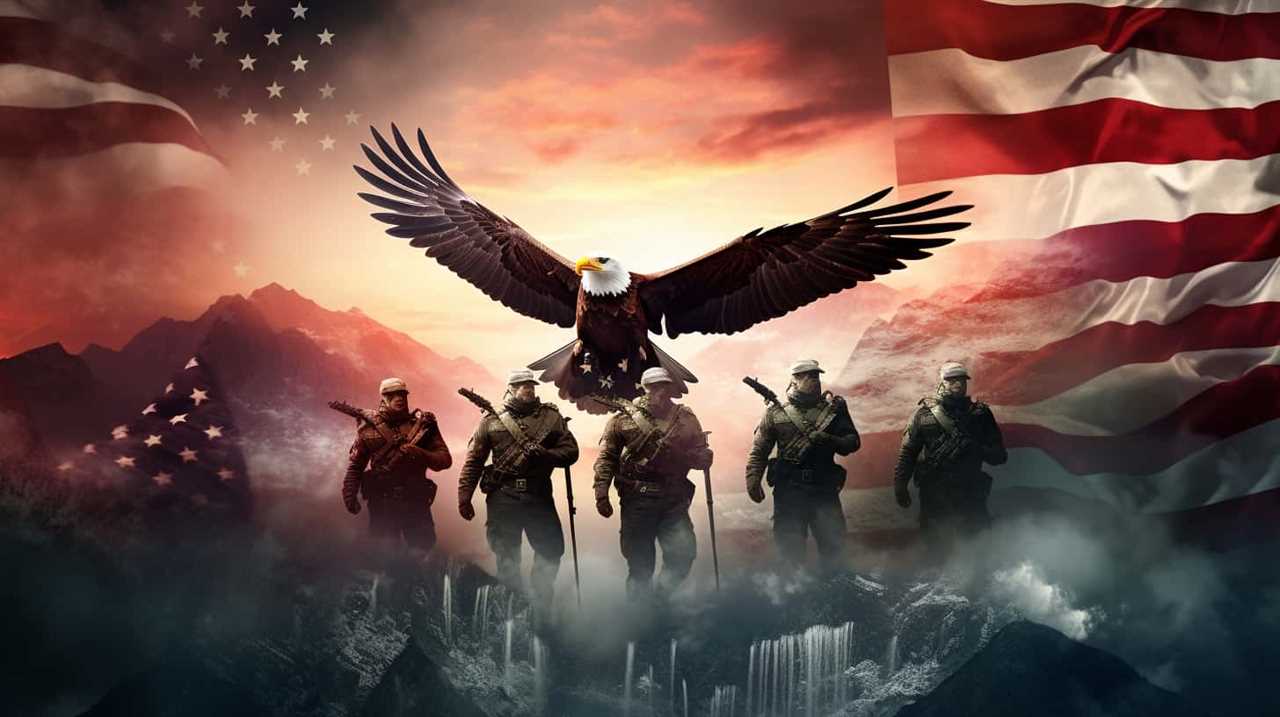
Transitioning into the next section about ‘I feel the need… the need for speed’ from Top Gun (1986), we see another example of an iconic movie quote that has become ingrained in popular culture.
I Feel the Need… The Need for Speed" – Top Gun (1986)
Moving from the enduring quote "There’s No Place Like Home" from The Wizard of Oz (1939), the next unforgettable cult movie quote to discuss is "I Feel the Need… The Need for Speed" from Top Gun (1986). This iconic line, uttered by Tom Cruise’s character Maverick, has become synonymous with the film and has had a lasting cultural impact.
Table: Cultural Impact of "I Feel the Need… The Need for Speed"
| Cultural Impact | Memorable Movie Quotes |
|---|---|
| Popularized the concept of speed and adrenaline in popular culture | "I Feel the Need… The Need for Speed" |
| Inspired countless parodies and references in other movies and TV shows | "Take my breath away" |
| Solidified Top Gun as a classic action film | "You can be my wingman anytime" |
This quote perfectly captures the thrill and excitement of Maverick and his fellow fighter pilots as they push the limits of their abilities in the skies. It has become a rallying cry for those seeking adventure and a desire to push boundaries. The line’s simplicity and power have made it one of the most memorable movie quotes of all time.
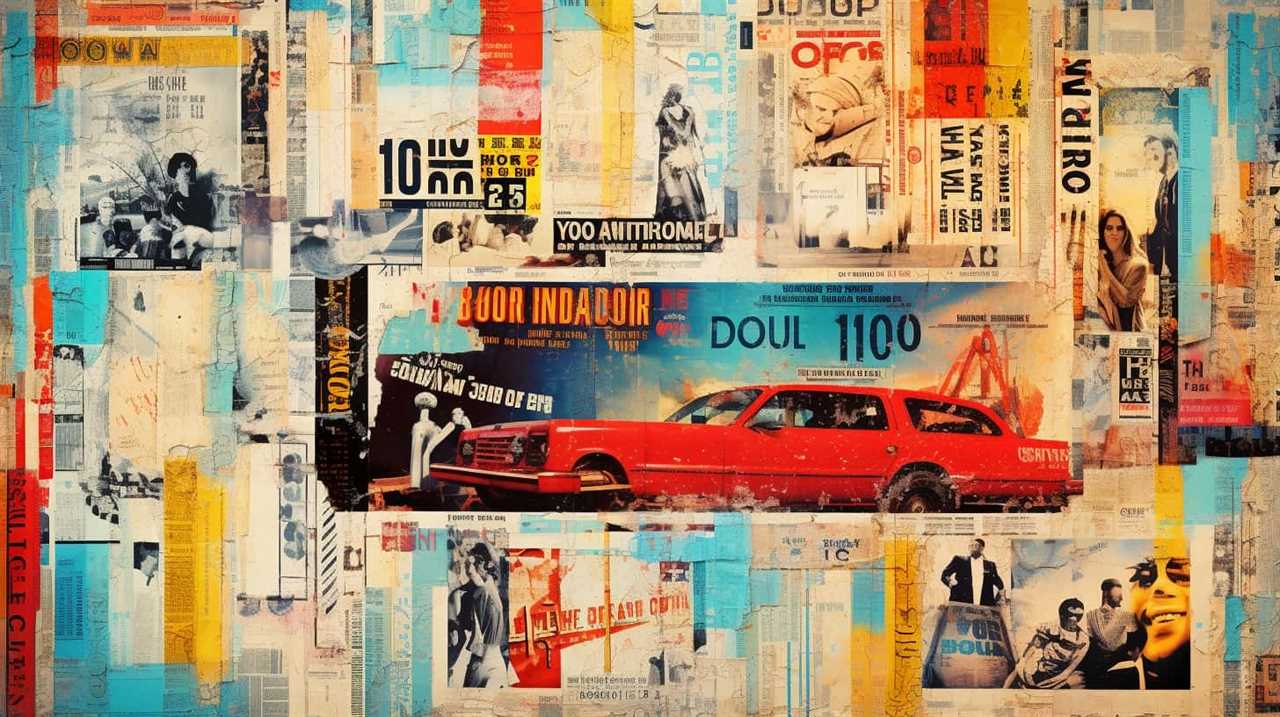
Transition: Now that we’ve explored the impact of "I Feel the Need… The Need for Speed," let’s move on to another unforgettable quote that has stood the test of time: "I’m Spartacus!" from Spartacus (1960).
I’m Spartacus!" – Spartacus (1960)
I have always been moved by the powerful declaration ‘I’m Spartacus!’ from the film Spartacus (1960). This iconic line, delivered by Kirk Douglas in the titular role, carries immense cultural significance and has had a lasting impact on popular culture.
The cultural significance of ‘I’m Spartacus!’ lies in its portrayal of unity and sacrifice. In the film, Spartacus and his fellow slaves refuse to identify the real Spartacus, choosing instead to protect their leader. This act of solidarity against oppression resonated with audiences and became a symbol of resistance against injustice.
The impact on popular culture can be seen in the numerous references and parodies of the line in various forms of media. From television shows to advertisements, ‘I’m Spartacus!’ has become a shorthand for standing up for what’s right and defying authority. It has become a rallying cry for individuals and movements seeking justice and equality.
You’ve Got to Ask Yourself One Question: ‘Do I Feel Lucky?’ Well, Do Ya, Punk?" – Dirty Harry (1971)
I’ve always been captivated by the iconic line from Dirty Harry (1971): ‘You’ve got to ask yourself one question: ‘Do I feel lucky?’ Well, do ya, punk?’ This line, delivered by Clint Eastwood’s character Detective Harry Callahan, has achieved immense cultural significance and left an indelible mark on filmmaking.
Dirty Harry, directed by Don Siegel, is a classic crime thriller that follows the no-nonsense detective as he takes on a serial killer terrorizing the streets of San Francisco. The film’s dialogue, especially this memorable line, has become synonymous with Eastwood’s tough and uncompromising persona.
The impact of this line on filmmaking can’t be overstated. It embodies the essence of the film’s gritty tone and the character’s relentless pursuit of justice. It has been referenced, parodied, and imitated countless times in popular culture, cementing its place in the lexicon of movie quotes.
Furthermore, this line exemplifies the power of a well-crafted and perfectly delivered line of dialogue. It creates tension, uncertainty, and captivates the audience, leaving them on the edge of their seats. The cultural significance and impact of this line have solidified Dirty Harry as a cult classic and contributed to its enduring legacy in the world of cinema.

Frequently Asked Questions
What Is the Significance of the Quote "I’ll Be Back" From the Terminator (1984)?
The quote "I’ll be back" from Terminator (1984) holds immense significance as it became an iconic catchphrase associated with Arnold Schwarzenegger’s character. It showcases his relentless determination and foreshadows his return in the movie. Comparatively, "Here’s Johnny!" in The Shining adds to the suspenseful plot.
How Does the Quote "Here’s Johnny!" Relate to the Plot of the Shining (1980)?
As I delve into the symbolic significance and psychological impact of the ‘Here’s Johnny!’ quote in The Shining, I am intrigued by its iconic pop culture reference and its influence on the horror genre.
What Is the Cultural Impact of the Phrase "May the Force Be With You" From Star Wars (1977)?
The phrase "May the Force be with you" from Star Wars (1977) has had a significant cultural impact. It has become a symbol of hope and encouragement, while also influencing the science fiction genre with its iconic use of "the Force."
How Does the Quote "Say Hello to My Little Friend" Contribute to the Character Development in Scarface (1983)?
In Scarface (1983), the quote "Say hello to my little friend" showcases Tony Montana’s character transformation. As he gains power, this line represents his increasing arrogance, disregard for others, and the destructive influence of his newfound authority.
What Is the Context Behind the Line "I’m King of the World!" in Titanic (1997)?
In Titanic (1997), the line "I’m king of the world!" is a pivotal moment when Jack, played by Leonardo DiCaprio, expresses his joy and freedom aboard the ship. It has become one of the most iconic movie quotes, symbolizing the exhilaration of embracing life’s possibilities.
What Makes Certain Movie Quotes Memorable and Iconic in Cult Films?
Certain movie quotes become iconic in cult films due to their unique delivery and relevance to the storyline. Whether it’s the chilling “I am your father” from Star Wars or the empowering “I drink your milkshake” from There Will Be Blood, top cult cinema quotes become ingrained in popular culture, adding to the film’s lasting legacy.
Conclusion
In the realm of cult movies, unforgettable quotes have the power to transport us back to those iconic moments on the silver screen. From Arnold Schwarzenegger’s menacing ‘I’ll Be Back’ to Jack Nicholson’s chilling ‘Here’s Johnny,’ these lines have become ingrained in pop culture history. They evoke emotions, capture the essence of their respective films, and leave a lasting impact on audiences.
Each word carefully chosen, these quotes resonate with us, reminding us of the magic and power of cinema.
Lauren’s talent in writing is matched by her passion for storytelling. Her love for books and deep understanding of culture and entertainment add a distinct flavor to her work. As our media and press contact, Lauren skillfully bridges the gap between afterQuotes and the broader media landscape, bringing our message to a wider audience.



